《Elementary Medical Statistics Second Edition》
| 作者 | 编者 |
|---|---|
| 出版 | Saunders |
| 参考页数 | 381 |
| 出版时间 | 1964(求助前请核对) 目录预览 |
| ISBN号 | 无 — 求助条款 |
| PDF编号 | 812505588(仅供预览,未存储实际文件) |
| 求助格式 | 扫描PDF(若分多册发行,每次仅能受理1册) |
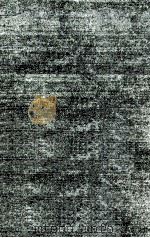
CHAPTER ⅠQUESTIONS FOR USE IN PLANNING INVESTIGATIONS AND IN EVALUATING REPORTS1
The Purpose of the Questions1
Statistics in Medicine2
Abuse and Misuse of Statistics3
Statistics and Mathematics5
The Research Worker and Statistical Techniques5
Sources of Variation7
The Ten Groups of Questions8
Ⅰ.The Nature of the Research and the Attitudes of the Researchers.QⅠ-1.Is our project actually research,or is it a demonstration or an educational program or provision of improved services?8
QⅠ-2.Are we going to turn a blind eye on some awkward bit of evidence?9
QⅠ-3.Will we be hindered by our desire for a simple answer?9
QⅠ-4.If our research will entail experimentation on human beings,what will be its ethical justification?9
QⅠ-5.If we intend to conduct experiments on human beings how are we to insure that ethical conflicts will not vitiate our results?13
CHAPTER ⅡPURPOSE AND GENERAL METHOD OF INVESTIGATION15
QⅡ-1.What is the immediate purpose of our investigation?What are the specific questions to be answered by it?15
QⅡ-2.What is the more remote(more general or ultimate)purpose of our investigation?15
QⅡ-3.Will the variables that we observe be the variables that we really wish to know about?17
QⅡ-4.Will the investigation be an experiment in the strict sense,or a survey,or a mixture of the two?19
QⅡ-5.If the investigation is a survey,will it be anecdotal or evaluational?23
QⅡ-6.If the investigation is a survey,will it be retrospective,prospective or instantaneous(cross-sectional)?24
QⅡ-7.If the investigation is a survey,what is the imaginary experiment which,if it were possible,we would,perform instead of the survey?26
QⅡ-8.What will be our contrast-groups?How comparable will they be initially?26
QⅡ-9.Are we trying to answer too many questions by one piece of research?27
QⅡ-10.Do we intend to conduct a pilot study before starting our definitive investigation?28
QⅡ-11.Have the questions that our research is intended to answer been already answered by someone else?28
QⅡ-12.Is this research outside our accustomed field?28
CHAPTER ⅢTHE POPULATION AND SAMPLING29
QⅢ-1.What is the initial definition of our population-the kind of subject or material which is to be studied,and tc which our conclusions will be applicable?29
QⅢ-2.Is the initial definition of the population adequate for the selection of subjects?29
QⅢ-3.What other populations are excluded by the definition of our population?30
QⅢ-4.Will the definition of the population be observed strictly throughout the study?31
QⅢ-5.How may the study itself affect the definition of the population?31
QⅢ-6.By what technique will we obtain our samples?32
QⅢ-7.What is the danger of haphazard selection?34
QⅢ-8.What is the danger of a purely systematic selection method?35
QⅢ-9.If our samples are not strictly random,how can we generalize,i.e.,argue from them to their populations?36
CHAPTER ⅣSUBDIVISION OF POPULATION AND SAMPLES39
QⅣ-1.Do we intend to subdivide our original population in order(a)to study a sample from each class separately,or(b)to confine our study to one class?If so,why?39
QⅣ-2.Apart from the factor under test,what are the variables that are associated with differences in the phenomena to be observed?42
QⅣ-3.Which of the variables listed in answer to Question Ⅳ-2 will we use as a basis for subdivision of the population?Why not the other variables?44
QⅣ-4.If we choose a measured variable(e.g.,age)as a basis for classification,how will we decide on the coarseness or fineness of the subdivision?44
QⅣ-5.If our research is an experiment in the strict sense,are we going to make paired comparisons within the same subject or between matched subjects?If so,why?48
QⅣ-6.What are the risks of paired comparisons in an experiment?49
QⅣ-7.If our research is a survey,what will be the advantages and risks of a matched comparison?51
QⅣ-8.If our research is an experiment,do we wish to increase its efficiency by utilizing a rather more complicated design than the two-group or paired comparison?If so,what are the advantages and risks?51
QⅣ-9.What two effects of variation should we remember at every point in an investigation?53
CHAPTER ⅤSKELETON LAYOUTS FOR RESULTS54
QⅤ-1.What skeleton layout must we prepare to receive our results?54
QⅤ-2.Are measurements to be presented and analyzed as measurement data or as frequency data?What will determine the choice?58
QⅤ-3.If we intend to present measurements as frequency data,when will we select the dividing lines between the classes?59
QⅤ-4.Will our sampling units be independent of each other,except insofar as the randomization brings them together?59
QⅤ-5.Are we going to mix the sampling units?61
QⅤ-6.Will the denominators be correct?63
QⅤ-7.What will be the groups exposed to risk?64
QⅤ-8.Will the difference between"incidence"and"prevalence"mislead us?67
QⅤ-9.What do we expect to be the order of magnitude of the frequencies and measurements that we observe,and of quantities that we calculate during the analysis?69
CHAPTER ⅥINTERPRETATION AFTER AN EXPERIMENT70
QⅥ-1.What exactly,is the hypothesis that we wish to test by our experiment?71
QⅥ-2.By what rules are we going to insure that the causal interpretation after the experiment will take the form:"Either the randomization or the factor under test"?72
QⅥ-3.Is randomization necessary if we are not going to apply a statistical test?72
QⅥ-4.What is the risk in trusting to our preexisting knowledge of variability and to our way of conducting the experiment,instead of using randomization?73
QⅥ-5.What are the risks in using the method of"alternates"instead of true randomization?75
QⅥ-6.What instrument are we going to use for randomization?78
QⅥ-7.What sources of variation must we remember in planning the randomization?82
QⅥ-8.What are we going to randomize,and how?82
QⅥ-9.Are we going to examine our treatment assignments in order to see if the randomization has"worked well"?86
QⅥ-10.How are we going to insure that the randomization will be solely responsible for bias throughout the experiment?87
QⅥ-11.If we are trying to find whether there is a difference in the effects of two or more treatments of any kind,what are the two types of error that we may make in drawing our conclusions?88
QⅥ-12.If we intend to apply a test of"statistical significance"to our data,how will we know that it is a legitimate test?90
QⅥ-13.If a legitimate test is applied to our data and gives a verdict"statistically significant difference,"what will it tell us?91
QⅥ-14.If a legitimate test is applied to our data and gives a verdict"nonsignificant difference,"what will it tell us?93
QⅥ-15.If we are going to apply a test of statistical significance,what level of significance will we choose?93
QⅥ-16.If the verdict of a test is"significant"at our predetermined level,what will we do in consequence thereof?94
QⅥ-17.If the verdict of a test is"not significant"at our predetermined level,what will we do in consequence thereof?97
QⅥ-18.What will make us decide to terminate the experiment?98
QⅥ-19.Are we going to make more than one comparison in the same data?If so,are significance tests legitimate?102
QⅥ-20.If we are comparing more than two treatments,how may significance tests mislead us?103
QⅥ-21.How will we estimate what our results really tell us,numerically,about the population represented by our sample?106
QⅥ-22.Is a"null hypothesis"an appropriate concept for our experiment?109
CHAPTER ⅦINTERPRETATION AFTER A SURVEY111
QⅦ-1.What is the most obvious risk in a cause-and-effect interpretation after a survey?111
QⅦ-2.What is the essential difference,with regard to causal interpretation,between a survey and an experiment in the strict sense?112
QⅦ-3.Are we going to apply a statistical significance test after our survey?If so,what will it tell us?113
QⅦ-4.What will be the logic of our inference after a survey?113
QⅦ-5.How may differences in admission rates(selection rates)produce spurious results in a survey?117
QⅦ-6.What are we going to do about the risk of bias due to interplay of admission rates in our survey?124
QⅦ-7.Under what conditions can we omit a contrast-group in a survey?125
QⅦ-8.Are we going to use a previous series of cases in evaluating a new treatment?126
QⅦ-9.Are we going to use patients as a contrast-group in a survey?127
QⅦ-10.Are we going to use official vital statistics in connection with our study?If so,what precautions should we take?128
QⅦ-11.If,instead of taking a particular hypothesis to clinical records,we search among them for possible relationships,are there any fruitful methods of procedure?132
QⅦ-12.In view of the uncertainties of research by survey methods,ought we to avoid these methods as much as possible?133
CHAPTER ⅧSAMPLE SIZES134
QⅧ-1.How large should our sample be?134
QⅧ-2.Having decided on the difference to be detected,and on our Type Ⅰ and Type Ⅱ errors,how are we to find our required sample sizes for a binomial two-treatment experiment or survey?135
QⅧ-3.If our data are to be measurement data how will we estimate required sample sizes?136
QⅧ-4.If we wish to use a sequential design how are we to estimate the required sample size?136
QⅧ-5.If we have to use unequal samples is there risk of bias?136
QⅧ-6.Do small samples introduce greater risk of biases than large samples?137
QⅧ-7.Will our available subjects and other facilities enable us to obtain a sample that is large enough for our purpose?138
CHAPTER ⅨCOLLECTING,RECORDING AND EXAMINING THE DATA139
QⅨ-1.Have we overlooked any of the influences that observers and other personnel may have on our investigation?139
QⅨ-2.If more than one observer will be involved,how may their differences affect the results?140
QⅨ-3.If we are conducting an animal experiment how may the condition of the animals affect our observations?141
QⅨ-4.How may unidirectional changes affect our observations?141
QⅨ-5.How may fluctuations affect our observations?142
QⅨ-6.How will we correct for unidirectional and fluctuating changes?143
QⅨ-7.Are we going to deceive ourselves by starting to time a phenomenon at the wrong point?144
QⅨ-8.How will we correct for differences in length of exposure to risk?145
QⅨ-9.Are we going to use routine clinical records in our investigation?146
QⅨ-10.Are we going to use questionnaires in our investigation?If so,what problems will arise?147
QⅨ-11.What are some of the precautions that we should take in planning data sheets?149
QⅨ-12.How will we try to prevent defects in observing and recording?151
QⅨ-13.How will we minimize misstatements in recording?151
QⅨ-14.Will our observational methods be sufficiently accurate for our purpose?153
QⅨ-15.If we are going to estimate observational variation will our estimate include all its components?160
QⅨ-16.How will we know that an event reported in a clinical experiment has really happened?160
QⅨ-17.Are we aiming at too great precision?161
QⅨ-18.How will we insure,for all sampling units,an equal exposure to observation?162
QⅨ-19.Will we be consistent regarding precision in the various parts of the investigation?162
QⅨ-20.Are we going to be deceived by the structure of our measurements?163
QⅨ-21.How,in general terms,are we going to handle our data during analysis?168
QⅨ-22.What are we going to do about"significant figures"and decimal places?168
QⅨ-23.What guidelines should we follow in preparing tables and graphs?170
QⅨ-24.Are we going to be deceived by average i trends?171
QⅨ-25.Are we going to confuse absolute and relative rates of change?173
QⅨ-26.Are we going to be deceived by the"goodness of fit"of our data to a mathematical formula?173
QⅨ-27.Are we going to reject observations that seem aberrant?If so,on what basis?175
CHAPTER ⅩLOST INFORMATION178
QⅩ-1.Will large numbers compensate for lost information?178
QⅩ-2.In a controlled trial what can be done about refusals to participate?179
QⅩ-3.In a survey is it safe to make up for refusals and losses by enrolling more subjects?180
QⅩ-4.What should be our maximum percentage of losses?180
QⅩ-5.How will we try to minimize losses?181
QⅩ-6.Will we be able to retrieve bits of missing information?182
QⅩ-7.How will we deal with the problem of lost information when analyzing our results?182
QⅩ-8.What are we to do about lost information in an experiment on nonhuman material?186
CHAPTER ⅪESTIMATING POPULATION PERCENTAGES FROM SAMPLES OF FREQUENCY DATA-AN INTRODUCTION TO RANDOM PROCESSES187
CHAPTER ⅫCOMPARISON OF SAMPLES OF FREQUENCY DATA218
CHAPTER ⅩⅢVARIATION BETWEEN MEASUREMENTS241
CHAPTER ⅩⅣCOMPARISONS BY MEASUREMENT270
CHAPTER ⅩⅤCONCOMITANT VARIATION AND TRENDS308
CHAPTER ⅩⅥSUPPLEMENTARY NOTES ON TECHNIQUES AND FURTHER STUDY339
REFERENCES353
APPENDIX357
Table Ⅰ.Limits of Binomial Population Percentages of X's Estimated from Random Samples-No.of X's in Sample:0-50;Sample Sizes:1-100358
Table Ⅱ.Limits of Binomial Population Percentages of X's Estimated from Random Samples-Percentage of X's in Sample:50-1,Sample Sizes:100-1000362
Table Ⅲ.Minimum Contrasts Required in Fourfold Contingency Tables to Insure a Type Ⅰ Error of Not More than 5 Per Cent(2.5 Per Cent in Each Tail)364
Table Ⅳ.Minimum Contrasts Required in Fourfold Contingency Tables to Insure a Type Ⅰ Error of Not More Than 1 Per Cent(0.5 Per Cent in Each Tail)366
Table Ⅴ.Percentages of Successful Experiments(%S)in Relation to Sample Sizes and to Percentages of X's in Populations A and B368
Table Ⅵ.Signed-ranks Test(Wilcoxon)371
Table Ⅶ.The Gaussian Distribution-Frequency of Random Samples Lying Beyond Specified Multiples of the Standard Deviation Measured Above and Below the Mean372
Table Ⅷ.Two-sample Ranks Test(Wilcoxon-White)373
INDEX375
1964《Elementary Medical Statistics Second Edition》由于是年代较久的资料都绝版了,几乎不可能购买到实物。如果大家为了学习确实需要,可向博主求助其电子版PDF文件(由 1964 Saunders 出版的版本) 。对合法合规的求助,我会当即受理并将下载地址发送给你。
高度相关资料
-

- ELEMENTARY ALGEBRA SECOND EDITION
- 1996 D.C.HEATH AND COMPANY
-
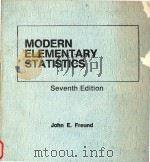
- Mathematical Elementary statistics Seventh Edition
- 1988 Prentice-Hall
-
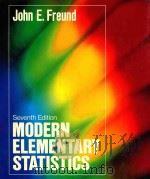
- MODERN ELEMENTARY STATISTICS SEVENTH EDITION
- 1988 PRENTICE-HALL
-
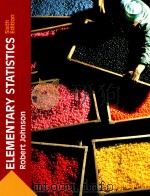
- ELEMENTARY STATISTICS SIXTH EDITION
- 1992 DUXBURY PRESS
-

- ELEMENTARY MEDICAL STATISTICS SECOND EDITION
- 1963 W.B.SAUNDERS COMPANY
-

- STATISTICS SECOND EDITION
- 1993 WM.C.BROWN PUBLISHERS
-

- MEDICAL VIROLOGY SECOND EDITION
- 1976 ACADEMIC PRESS
-
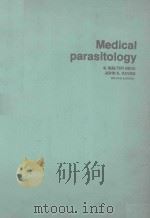
- MEDICAL PARASITOLOGY SECOND EDITION
- 1976 THE C.V.MOSBY COMPANY
-
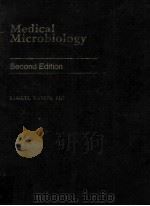
- MEDICAL MICROBIOLOGY SECOND EDITION
- 1986 ADDISON WESLEY PUBLISHING COMPANY
-

- MODERN ELEMENTARY STATISTICS NINTH EDITION
- 1997 PRENTICE HALL
-

- ELEMENTARY ALGEBRA SECOND EDITION
- 1994 HARCOURT BRACE JOVANOVICH COLLEGE PUBLISHERS
-

- ELEMENTARY STATISTICS THIRD EDITION
- 1996 ADDISON WESLEY
提示:百度云已更名为百度网盘(百度盘),天翼云盘、微盘下载地址……暂未提供。➥ PDF文字可复制化或转WORD


